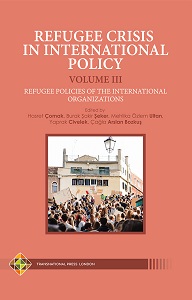United Nations High Commissioner for Refugees and Its Relations With The Other United Nations’ Organs
United Nations High Commissioner for Refugees and Its Relations With The Other United Nations’ Organs
Author(s): Doğan Şafak Polat
Subject(s): International relations/trade, Migration Studies, Asylum, Refugees, Migration as Policy-fields
Published by: Transnational Press London
Keywords: Migration Series; EU; ILO; immigrants; international organisations; international policy; ITO; migration policy; NATO; refugee crisis; refugee law; refugees; UN; UNHCR;
Summary/Abstract: Since its establishment on December 14, 1950, after World War II, the United Nations (UN) High Commissioner for Refugees (UNHCR) has helped millions of people who have fled or lost their homes.1 This organization aims to save lives, secure rights and create a sustainable future for refugees, forcibly displaced communities and stateless people.2 It advocates that everyone in their country who has escaped abuse, oppression,war or catastrophe has the right to seek asylum and reach safe refuge.3 Both the UNHCR Statute and the 1951 Convention and the 1967 Protocol gave UNHCR responsibility to oversee the governmental implementation of international refugee law instruments. It describes the term “refugee” and sets out the rights of refugees and the legal responsibilities of 149 State parties to care for them. In a way, it could be said that UNHCR served as the “guardian” of the 1951 Convention and the 1967 Protocol. States arerequired to work with UNHCR under the law to ensure that the rights of refugees are respected and secured.
- Page Range: 7-25
- Page Count: 19
- Publication Year: 2021
- Language: English
- Content File-PDF

